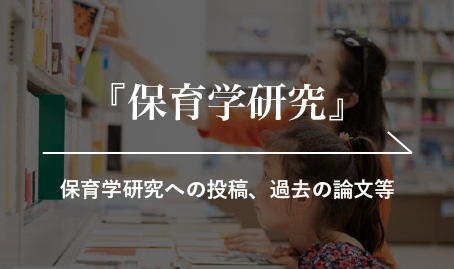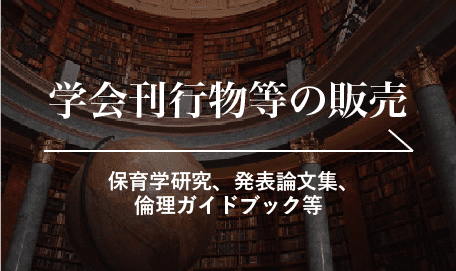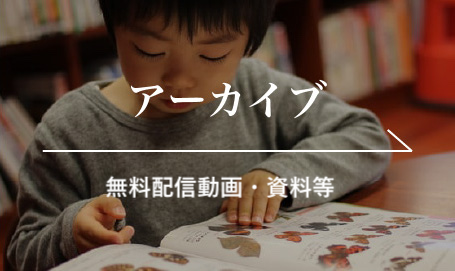< VOLUME 48, No.1 >
Tanimura Hiroko. Transformation through Musical Activities Seen in a Child with Autism : Using a Process Scale of Infant Development through Musical Activities.
Research on Early Childhood Care and Education in Japan, 2010, 48(1), 10-22.
The research focuses on the effective use of music and rhythm to support a child with autism with communication and interpersonal relationship problems. In order to understand the autistic child’s development through music activities, Jean Piaget’s theory of ten stages of moral development were employed, and categorized in listening, moving, operating, and singing, and interaction with people to construct a “process scale of infant development through musical activities.” Changes appeared in the musical activities in the child with autism were indicated in a radar chart. This process was practiced with the collaboration of an individual who received professional training who made the musical activity programs for the child. Therefore, it is important for a teacher/caregiver to be conscious of these stages to help the development of the child with autism.
Keywords: a child with autism, an individual who received professional training, musical activities, process scale of infant development through musical activities, music and rhythm
—————–
Yamazaki Noriko. How to Develop the Self-Conscious “I among All”? : A Case Analysis of the Change in Self-Consciousness of a Middle School Child with Autism.
Research on Early Childhood Care and Education in Japan, 2010, 48(1), 23-35.
The purpose of this research is to consider the development of Masaki, a middle school boy with autism, to an acceptance of others in his age group at his after-school program facility as “friends ” from the self-conscious point of view expressed in “I am me” and “I among all” and to consider meanings of Masaki’s relationships with those around him. Masaki’s introverted style had developed from an early stage and his self-consciousness, expressed as “I am me,” was solidly established, but he was defensive and unable to accept others. Use of stick finders as a means of interaction with others allowed Masaki to develop interactive relationships inside him, and enriched his interactive relationships with others. As a result, Masaki learned to have communication with others. It was not handling of his difficulty but passive communication with those around him and their joy in his growth had allowed Masaki to breathe life into the interactive relationships within him.
Keywords: high school child with autism, self-conscious, “I am me”, “I in all”, development of relation
—————–
Yuzawa Miki, Yuzawa Masamichi. Experiences and Growth of an Asperger Syndrome (AS) Child with his Friends(Part I.
Research on Early Childhood Care and Education in Japan, 2010, 48(1), 36-46.
In this study, we observed activities of an Asperger Syndrome (AS) boy supported by a teacher who had constructed the relationship of trust with him, and we clarified the process that the boy and his peers in the classroom grew together. The teacher helped the children create a context in which each member respects characteristics of individual children including the AS boy. Experiences of the AS boy were shared by his classmates. A problem that the AS boy had experienced was discussed, and solved by his peers, and the children applied the boy’s experience to their own problems. The results underscore the importance of practice in which the characteristics of AS children are taken into consideration.
Keywords: Asperger Syndrome, relationship of trust, community, shared experience
—————–
Ohno Ayumi, Manabe Ken, Okahana Kiichiro. Non-Daily Experience and Their Meaning in Kindergarten : How Do Children Meet Gorry?.
Research on Early Childhood Care and Education in Japan, 2010, 48(1), 47-57.
The purpose of this study is to analyze the effects of non-daily-experiences on children’s lives at kindergarten through observations of an overnight-camp. In particular, the study investigated aspects that function as non-daily experiences beyond the teachers’ intentions as a result of children’s living in a story. Several studies have investigated the way in which children recognized stories between fantasy and reality (Woolley & Wellman 1990). Moreover, some researchers have reported the meaning of exploratory activities by imaginary creatures that appeared in their kindergarten stories from “scary monsters” to “protectors” of the kindergarten. Furthermore, they reconstituted kindergarten activities with novel meanings and recreated it by their living in a shared story.
Keywords: kindergarten, non-daily experience, imaginative creature, story, re-organization
—————–
Shimura Yuuko. A Preliminary Study of Understanding Children’s Paintings as Stories : Reading the Text of Children’s Paintings.
Research on Early Childhood Care and Education in Japan, 2010, 48(1), 58-68.
The purpose of this paper is to discover a way of understanding the stories contained in the paintings of children. The method of the study is to analyze, from the view of narratologie, different types of children’s paintings, and multiple paintings drawn by a child. As a result, by identifying the main character in each painting and by knowing the distance relationship between the main character and the child author, we can find variations in quality or mode, in the world of the story. These, in turn, can serve as clues for understanding the story of children’s paintings.
Keywords: art education, children’s literature, narratologie, children’s paintings
—————–









